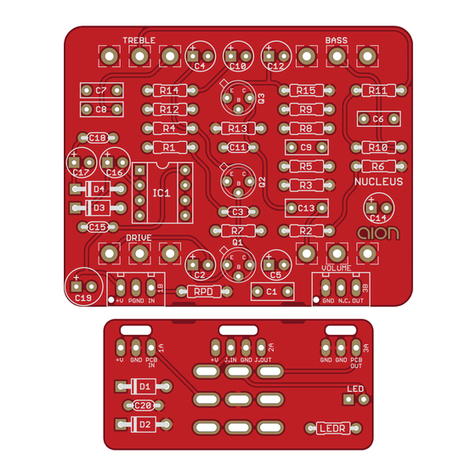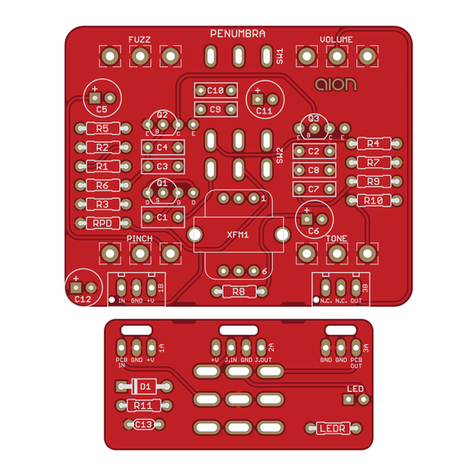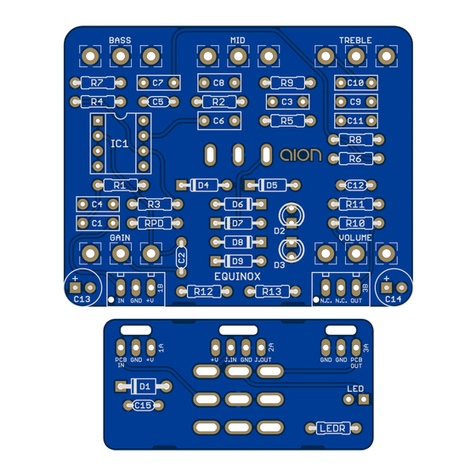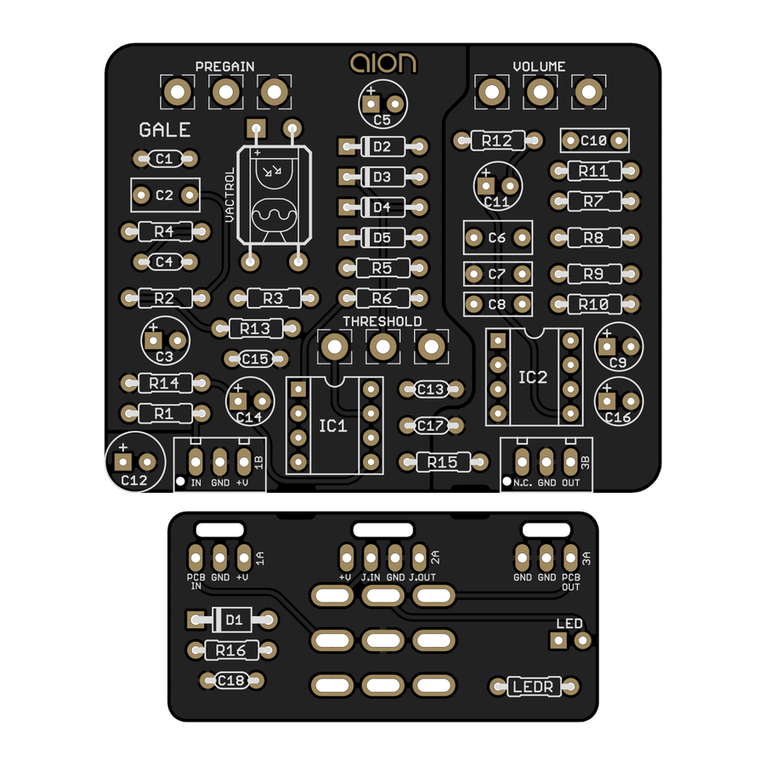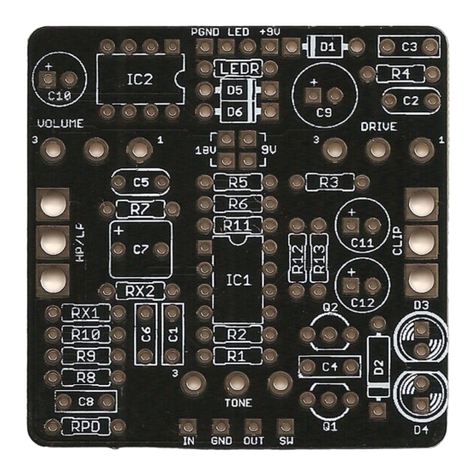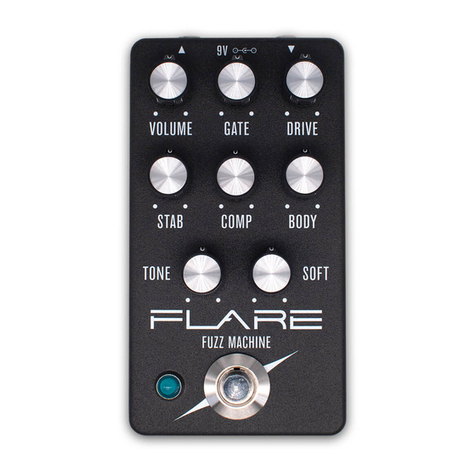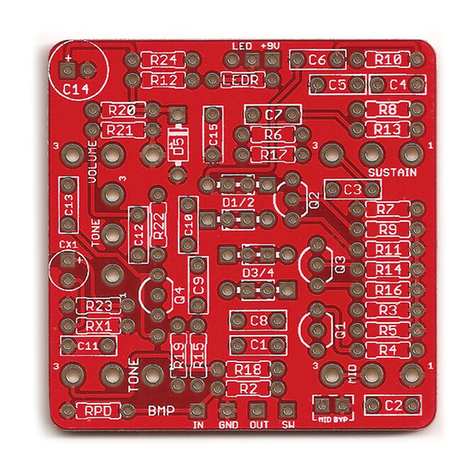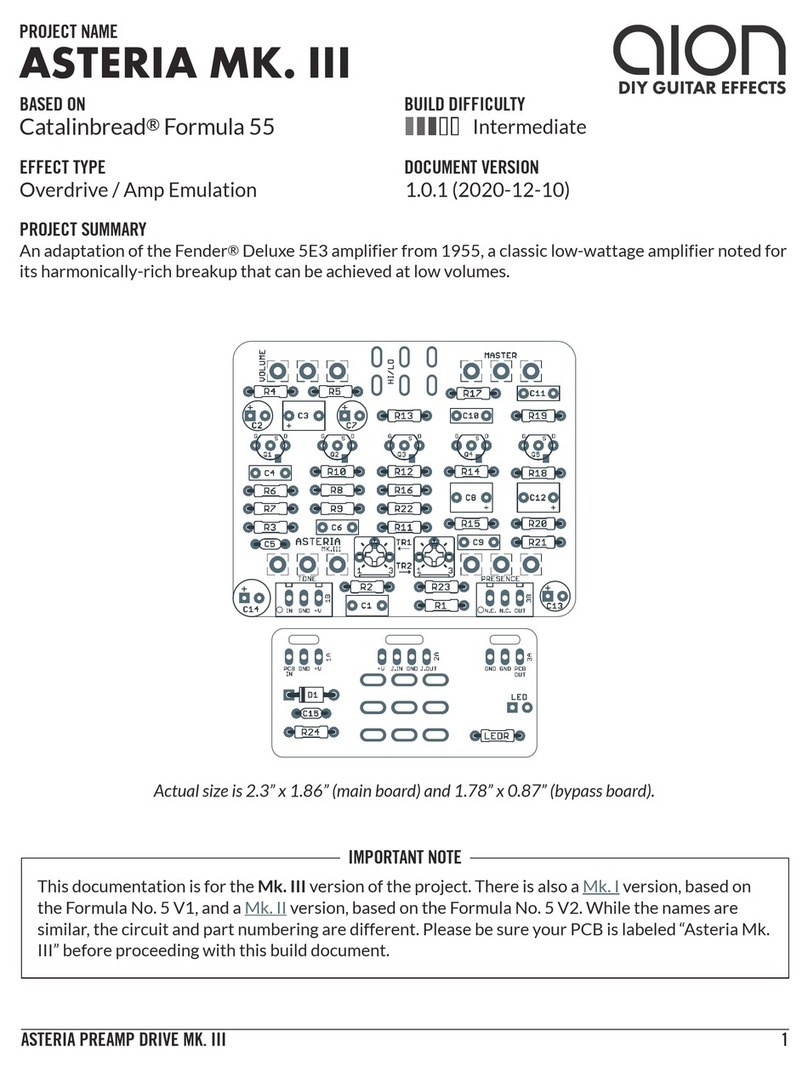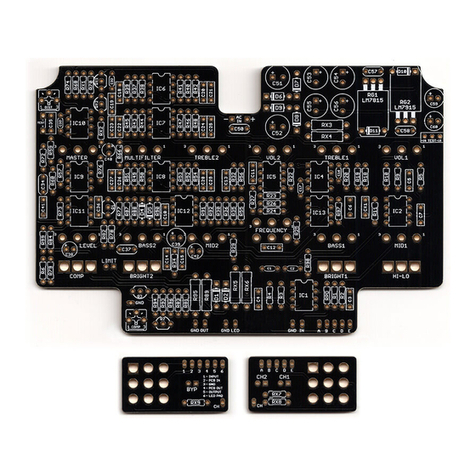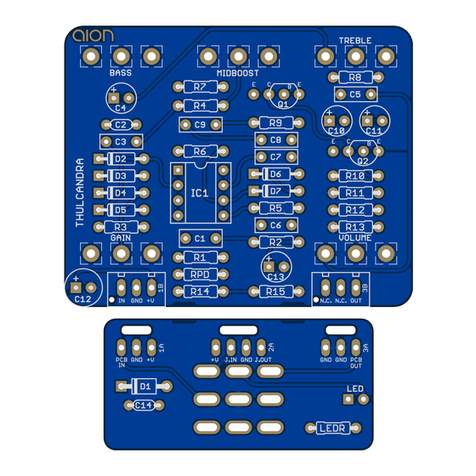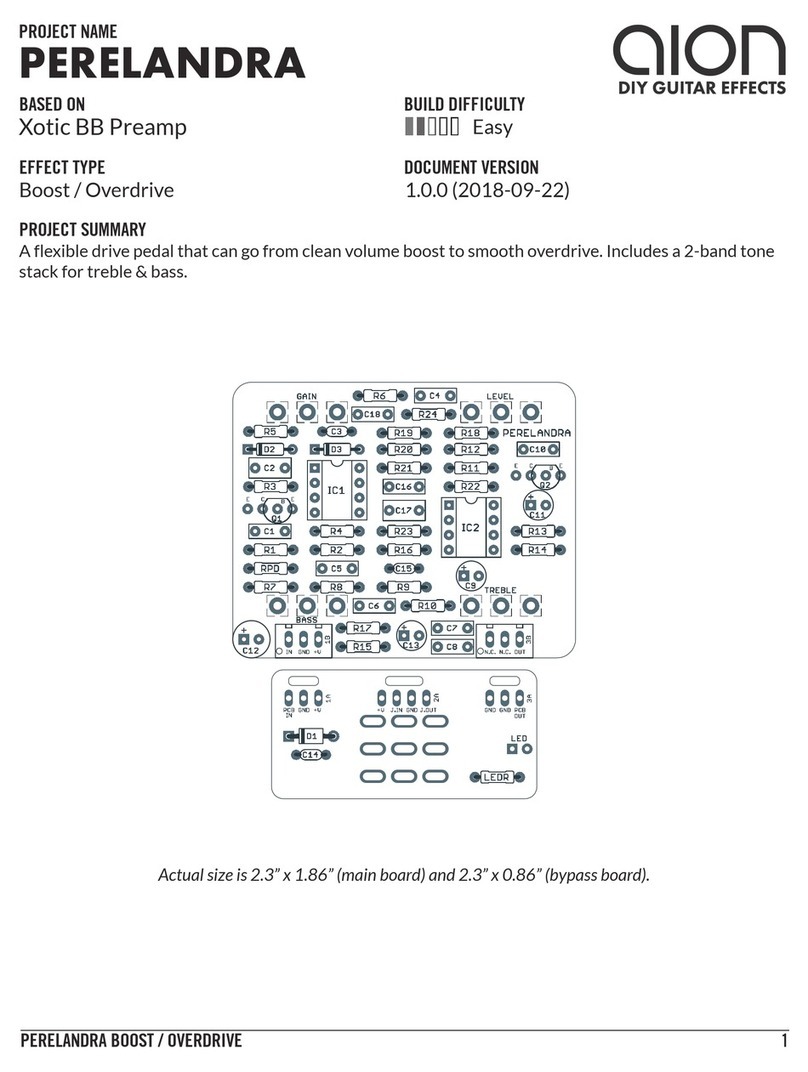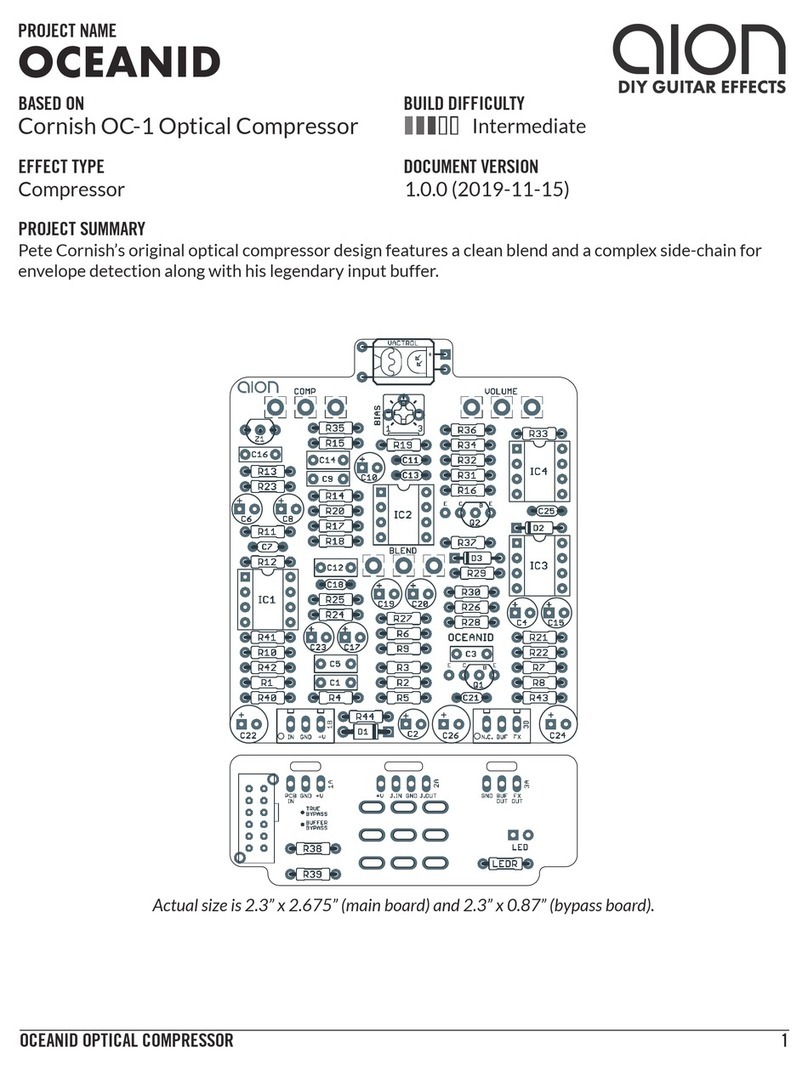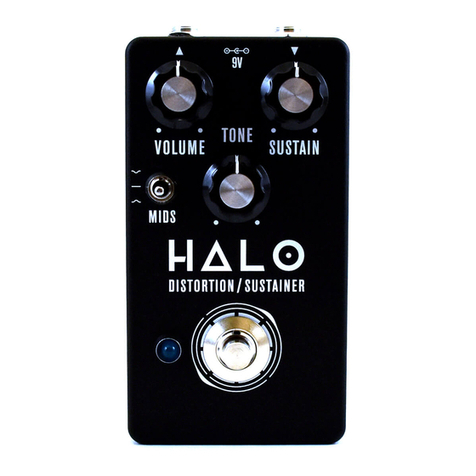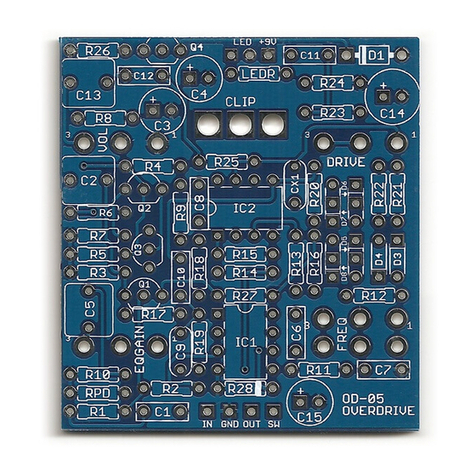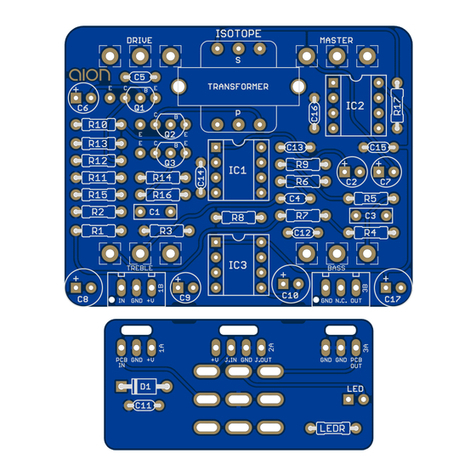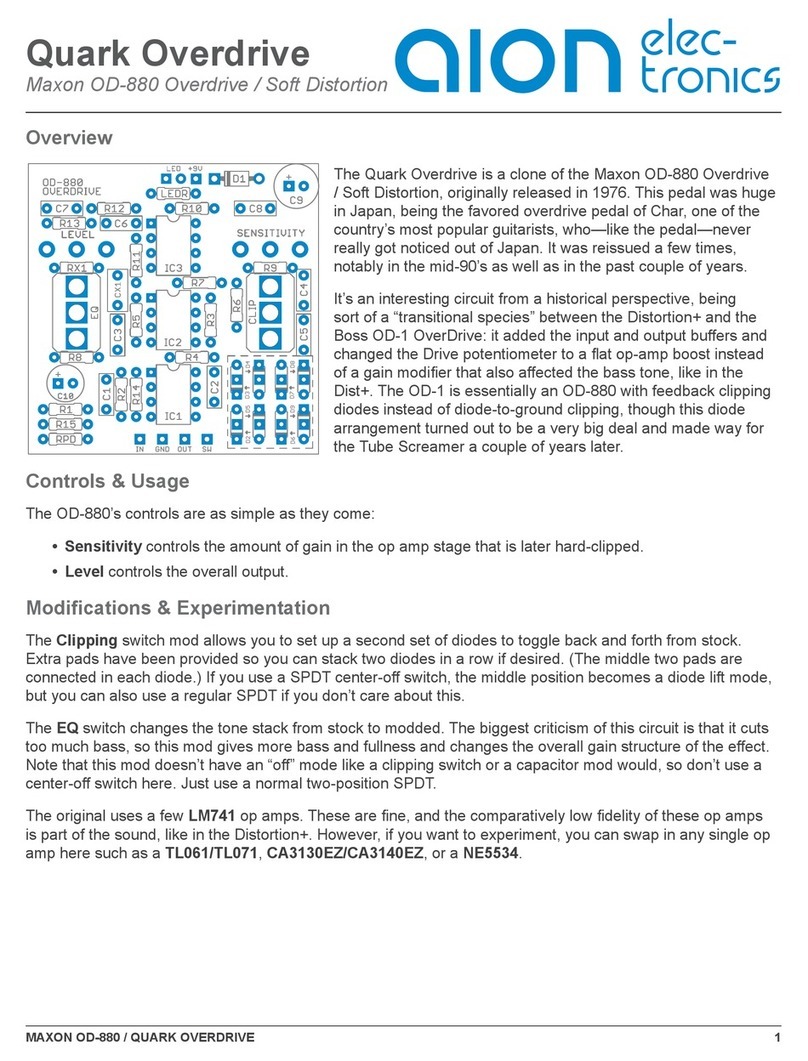
3KLON CENTAUR / REFRACTOR OVERDRIVE
Build Notes
1 These resistors are wired off-board and are not found on the PCB itself. See wiring diagram further down.
Note that these three resistors are not shown in the schematic.
2 Can use a MAX1044 as well, but I recommend the TC due to the higher maximum voltage. If using a
MAX1044, use a 1N4739 for Z1 to keep the voltage below the MAX1044’s max voltage.
3The original uses germaniums of an unknown type. But germanium diodes have such wild ranges that even
if the part number was known, it wouldn’t necessarily mean that another of the same name would sound the
same. What is known is that the Centaur’s diodes have been measured at around 0.35v forward voltage. I’ve
had pretty good luck getting this value with the 1N270 from Tayda Electronics, but you may want to order 5 or
10 and then measure them to nd the ones that are closest to 0.35v.
Keith Vonderhulls from Build Your Own Clone did some extensive testing of different diodes and found that
Russian D9E diodes were an exact sonic match. (D9B, D9D, D9J, D9K and D9L are equivalents and can
usually be found cheaper.) Many people have tried this diode since then and agreed that it’s very, very good.
It’s unlikely that the real Centaur unit uses this exact diode, but it’s the closest that the DIY scene has gotten.
However, a lot of people have used other types of diodes and found that they preferred them over standard
germaniums. One good one that is often tried is the BAT41. Others have reported really good results with the
OA1160, which are pretty much impossible to nd as of recently, but if you can nd some then grab them!
4 The original uses linear taper (B), but lots of people prefer audio taper (A) for the Output control for ner
control over the volume. The maximum available volume wouldn’t change.
Silver Pony specs
In July 2014, Build Your Own Clone reverse-engineered a silver Centaur, serial S2207, and found a number
of discrepancies. No one’s quite sure what to make of this. It is not representative of standard-production
Centaurs but many people have tried these specs and liked the result. The “Silver Pony” values are as follows:
Part Original Silver Pony Effect
R10 2k 47R More gain
R17 27k 10k Increased volume & treble for the dry signal
R18 12k 4k7 (along with R17 change) Better wet/dry ratio
R21, R23 1k8 / 4k7 4k7 / 1k8 Slight shift in range of Tone knob
C13 820pF 560pF Slight increase in overall brightness
Additional Part Notes
• Capacitors are shown in nanofarads (n or nF) where appropriate. 1000n = 1uF. Many online suppliers do
not use nanofarads, so you’ll often have to look for 0.047uF instead of 47n, 0.0056uF instead of 5n6, etc.
• The PCB layout assumes the use of lm capacitors with 5mm lead spacing for all values 1nF through
470nF. I prefer EPCOS box lm or Panasonic ECQ-B/V-series.
• Potentiometers are Alpha 16mm right-angle PCB mount.
• Switches are Taiway (Small Bear) or Mountain Switch (Mouser) brand with solder lugs. I prefer the short-
toggle variety, but that’s just a matter of aesthetics.
• I recommend using these dust covers / insulators from Small Bear to insulate the back of the pots from
the board and prevent shorts. If you don’t use these, use some electrical tape or cardboard to act as
insulation. The right-angle pots will make direct contact with the solder pads otherwise.

